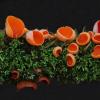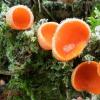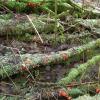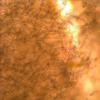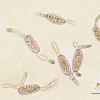
11-01-2026 20:35
Hello.A very tiny pyrenomycete sprouting sparsely

09-01-2026 17:41
Arnold BüschlenHallo, F. dilatata wird von vielen Bryoparasiten

10-01-2026 20:00
Tom SchrierHi all,We found picnidia on Protoparmeliopsis mur

07-01-2026 22:22
 Danny Newman
Danny Newman
Tatraea sp. on indet. hardwood The Swag, Great Sm

10-01-2026 01:18
 Danny Newman
Danny Newman
cf. Neovaginatispora fuckelii on indet. shrub Pre

07-01-2026 10:24
 Danny Newman
Danny Newman
Pezicula sp. on indet. hardwood Appalachian Highl

09-01-2026 10:08
 Blasco Rafael
Blasco Rafael
Hola, en el mismo habitat que la anteriorRetamaDia

08-01-2026 21:22
 Blasco Rafael
Blasco Rafael
Hola, He recogido esta muestra de Orbilia sobre Re

07-01-2026 17:29
 Marc Detollenaere
Marc Detollenaere
Dear Forum,On a barkless Populus I found some smal

10-11-2021 17:33
 Riet van Oosten
Riet van Oosten
Add-on topic http://www.ascofrance.com/forum/7059
This is my first post, which hopefully will comply with all forum rules.
These bright orange fruitbodies were initially found on Saturday 12th january 2013, in Lancashire, England, growing amongst normal red ones. (Sometimes immediately adjacent - almost touching).
After microscopy, and never having seen such orange variants before, I suspected they may be Sarcoscypha austriaca var. lutea, but when I discovered that S.austriaca var. lutea has only one British record, I began to doubt my ID, and have since returned to the site, taken more photos, collected more examples, and carried out more microscopy.
Growing on moss covered trunks/branches which were felled several years ago. I found it impossible to be certain as to the specific tree species, as there are small Oak, Sycamore, Alder, & Ash in the immediate vicinity.
Spores measured between 26.8-36.6µ in length, x 11.2-15.4µ in width.
Excluding largest & smallest spores, average of 30 measured spores was 31.6x13.6µ
Average Q value being 2.32
Good numbers of the spores can be seen to have the typical "blunt" ends and multi guttulate droplets, suggestive of S.austriaca.
All spore measurements were taken from spores dropped during overnight spore prints directly onto microscope slides.
Excipular hairs were found to be very curly, reinforcing my opinion that these are certainly S.austriaca rather than S.coccinea (Images x200):-
Reading Mr. Hans-Otto Baral's website with regards to albinism in Sarcoscypha species, and that Orange variants can appear in "normal" S.austriaca now leads me to believe that these are of that type, but could they yet be S.austriaca var. lutea?
I shall be very grateful for any replies or opinions.
NB: Please note that although these orange cups were growing alongside normal red ones, the red fruitbodies in the first photo were placed there for visual colour comparison.
Kind regards
Michael Valentine

undoubtedly you have S. austriaca, considering spore shape and guttulation, and undulating hairs. The colour variants do not deserve any taxonomic value, in my opinion. They appear within a population and might originate from genetic defects.
Are you aware hat your fourth photo shows only dead spores while the fifth only living? Do you remember how differently you treated the spores in the two images? You can also see that the dead spores are on average distinctly narrower.
Abou the host trees you can easily distinguish ash and oak from alder, acer and willow by the large pores arranged in rings. A closer look on a cross break may also distinguish among these five genera.
If you keep the apos for some days in a moist box at room temperature you may obtain germinating spores with the characteristic conidia.
Zotto
?
Thank you very much for this reply.
I do not have a great deal of experience (especially with regard to the microscopy), and was not actually aware that the image shows dead spores.
The fruitbodies from which these photos were made were collected at the same time, and the spores were obtained via overnight spore print onto microscope slides.
The spores were mounted, and the photographs were taken within a few minutes of each other. - But each of the spore photos was from a separate fruitbody.
In the one with the dead spores the mountant was plain water with the addition of Lactophenol Cotton Blue.
The other one was again mounted in plain water, but with the addition af a very minute amount of Congo Red.
The fruitbodies at time of collection had been subject to approximately two days of snow and frost, and some were quite frozen when collected. Could it be that one had been affected by temperature more than the other?
Kind regards,
Michael Valentine

Zotto
Once again, many thanks for this reply.
I shall keep this information regarding lactophenol Cotton Blue in mind when preparing any future spore mounts & photographs.
Best regards,
Michael Valentine

Zotto
